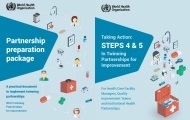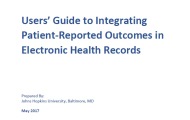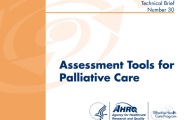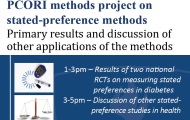Reports and Presentations
This section contains recent reports and presentations prepared by CHSOR faculty and staff.
Who Twinning Partnership For Improvement Reports

The WHO Twinning Partnership for Improvement Preparation Package provides a practical step-by-step approach for any health institution interested in improving the quality of health service delivery through twinning partnerships. It uses a 6-step cycle which begins when two or more partners agree on the establishment of the partnership.
Taking Action: Steps 4 & 5 in Twinning Partnerships for Improvement supports the planning, action, implementation and guidance within partnerships and can be used by any QI team that has identified a quality challenge, specific need, or current gap in service. It supports the development of a targeted action plan for intervention and improvement in the health care setting.
Users' Guide To Integrating Patient-reported Outcomes In Electronic Health Records

This Users' Guide facilitates integration of patient-reported outcomes (PROs) in electronic health records (EHRs), enabling use of PRO data for multiple clinical, research, and administrative applications, and thereby promoting patient-centered care. The Guide addresses 11 key questions, among them: How can users be trained and engaged? Which outcomes are important to measure for a given population? How should candidate PRO measures be evaluated? The Guide was developed by Johns Hopkins University through a contract from PCORI. The International Society for Quality of Life Research (ISOQOL) was a collaborating partner.
Assessment Tools For Palliative Care

The report provides an overview of palliative care assessment tools designed to be completed by or with patients or caregivers. The report identified more than 150 assessment tools addressing most domains of palliative care, although there were few, and sometimes no, assessment tools in the domains of: Spiritual, Religious, and Existential aspects of care; Structure and Processes of Care; Ethical and Legal aspects of care; Cultural aspects of care; or Patient-Reported Experience. The findings also warn that while some data exist concerning the psychometric properties of tools, the responsiveness of different tools to change is relatively unevaluated.
Advancing And Applying Stated-preference Methods Among Patients With Type 2 Diabetes

The presentation compares the results of two preference elicitation experiments, a best-worst scaling and a discrete choice experiment, that measured the treatment preferences of patient with type II diabetes for glucose lowering medications. Results show that survey participants did not express a strong preference towards either one of the preference elicitation methods. Moreover, the patients display significant preference heterogeneity for the different aspects of diabetes medication.
Advances In The Use Of Patient Reported Outcome Measures In Electronic Health Records

There is now a convergence in the evolution of patient reported outcome (PRO) measurement, medical record keeping and comparative effectiveness research into an increasingly electronic and patient-centered space. The review includes 11 case studies from the US that illustrate the range of what has been done in diverse health care settings for clinical care, quality improvement and research. In the analysis, four major themes emerged regarding the integration and use of PROs in Electronic Health Records (EHRs): (1) Necessity of System Customization, (2) Balancing Research and Practice Goals, (3) Demonstrating Value and (4) EHR Integration and Limitations.
Curricular Advances For Patient-centered Comparative Effectiveness Research: A Conference Report

Comparative effectiveness research (CER) and patient centered outcomes research (PCOR) gained national prominence. Researchers from five academic Centers of Excellence in CER/PCOR convened a conference to discuss curricula. Observations included that CER/PCOR is a team science with the need of multidisciplinary training covering methods for patient engagement, dissemination and implementation, and use of big data.
Measuring The Impact Of Interprofessional Education On Collaborative Practice And Patient Outcomes

The Institute of Medicine (IOM) convened a committee to examine the methods needed to measure the impact of Interprofessional education (IPE) on collaborative practice and health and system outcomes. The committee developed a Conceptual Model for Evaluating Outcomes that includes the education-to-practice continuum, a broad array of learning, health, and system outcomes, and major enabling and interfering factors. The committee highlights four areas for evaluating IPE: (1) aligning the education and health care delivery systems; (2) developing a conceptual framework for measuring the impact of IPE; (3) strengthening the evidence base for IPE; and (4) more effectively linking IPE with changes in collaborative behavior.
